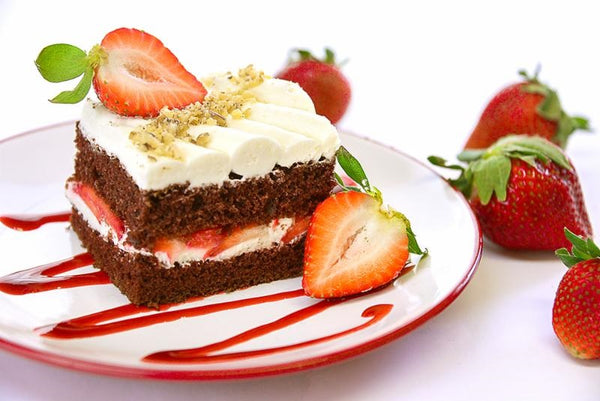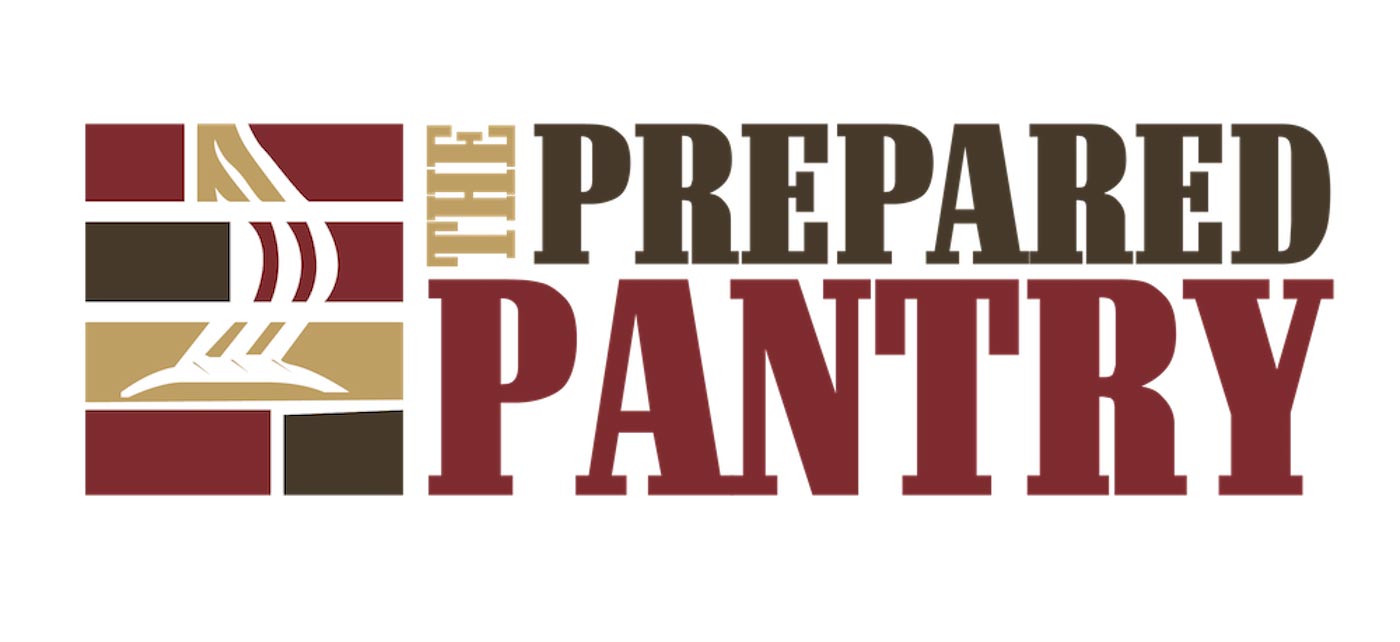Bake Almost Everything Better!
Enjoy your journey.
How do I tell when my bread is done?
The tendency is to under-bake yeast breads. The internal temperature of most yeast breads should be 210°F and must be at least 185°F. Soft sandwich breads often baked to 190 to 200°F.
They should bake for 30 to 35 minutes at 350 degrees. But every oven is different.
The only way to reliably tell what is going on inside a loaf is with a probe-type thermometer. Remove the bread from the pan and insert the thermometer through the bottom crust into the center of the loaf.
(If you are going to bake bread and you don"t have a thermometer, we strongly recommend that you purchase one. You will need it to test the temperature of the water, the dough, and the finished bread. You can buy one here.)

Crust Color
When the bread is done, the crust color will range from a golden brown to a deep brown for artisan breads baked in a hot oven. Some sourdough and artisan loaves never get darker than a beige or dark cream. You can't tell by the color.
Breads with a higher sugar content or in a hot oven will tend to brown more rapidly as the sugar caramelizes. If the bread is browning too rapidly, make a tent of aluminum foil and cover the top of the loaf.
In light colored pans, the bottom crust is the last to brown. With a done loaf, the bottom will color even in a light-colored pan.

Yeast Breads & Sound
My mother was a bread baker. She tested doneness by tapping the loaf with her finger, and a done loaf will sound hollow when tapped. I don't remember her ever making a mistake. Though she taught me to do the same, I'm not as good as she was. Out of habit, I still tap the loaf but I nearly always follow with a thermometer probe and sometimes the thermometer proves me wrong.
![]() Recommended products and articles:
Recommended products and articles:
- Italian Country Bread is European artisan bread that you can make in your bread machine or oven. Typical of European country breads, there's a hint of sourdough and a crackly, chewy crust even when made in your bread machine.
- San Francisco Style Sourdough Bread makes an authentic sourdough in your oven or bread machine. The flavor is authentic and the crust is thick chewy. It is a light ivory color, very attractive.
- How to Bake Bread in the Oven in Three Easy Steps. Most of our bread mixes are designed so they can be made in the bread machine. But you also bake them in the oven--in three easy steps.
- We have over 80 bread mixes. Nearly all make great French toast. That's a lot of French toast to explore. Here's Seven Ways to Make Your French Toast Better.
Part 2: Cookies
If the tendency is to under-bake breads, the tendency is to over-bake cookies. Take them out just before you think they are done and you won't be wrong often.
My father was a consummate cookie baker. If you were to ask him what his secret is, he would tell you: "I don't over-bake cookies." The difference between a just right cookie and an over-baked one is dramatic.

Cookies & Uniform Size and Quantity
Use a cookie scoop to make cookies uniform in size. Not only are they more attractive but different sizes of cookies take different times to bake. Put the same number of cookies on a sheet each time. The more cookies on a sheet, the longer it takes to bake them. It seems that the last sheet of the batch has six cookies instead of twelve. If so, reduce your baking time by at least a minute.
Don't let you cookie dough get warm while you're waiting for the earlier batches to bake. The butter should be a solid, not melted. Put your mixing bowl in the refrigerator while you're waiting.
Cookies & Taking Them Off the Sheet
Many recipe writers tell you to leave the cookies on the sheet for a minute or two. Cookies continue to bake on a hot baking sheet. Sometimes that's necessary for an easy release but for most recipes, remove the cookies as quickly as you can.
Most of the time, we bake on parchment paper and slide the parchment paper off the pan as soon as the cookies come from the oven.
If the cookies look a little soggy in the middle, then leave them on the sheet for a few minutes and they will firm up.

Cookies & Color
Most cookies should be gold in color, not brown. Put the first cookie on a cooling rack, lift the rack and peak at the underside of the cookie. If it's brown, it's cooked too long. T should be gold, not brown.
Both the amount of sugar and soda in the recipe will affect how fast a cookie browns.

Chocolate and Bar Cookies
Chocolate cookies represent another challenge: you can't tell if they are browning. If you are baking with a new recipe, bake a few cookies and check them for doneness before baking the entire batch.
Chocolate cookies will tend to lose their "wet" look when done. Many bar cookies will have a dry, shiny crust when done.

![]() Recommended products and articles:
Recommended products and articles:
- Double Chocolate Fudgy Cookies, shown above, are incredible.
- Rum Raisin Oat Cookies are a bestseller, delicious and wholesome. Shown above.
- A One-Ounce Medium Cookie Scoop is a cookie maker's essential. If you don't make all your cookies the same size, they won't be uniformly baked.
- Learn the Importance of Precision Baking and cruise some of our fine cookies.
- This a great cookie guide: How to Bake Better Brownies, Breads, and Cookies.
- See also: How to Bake Better Brownies.

Part 3: Cakes
For most baked goods (but especially cakes) it is best to set the timer for a few minutes less than directed in the recipe; different ovens or even different positions in the oven bake differently. A dark pan bakes more quickly than a light pan. When you find your cake not quite done and want to continue baking, set the timer for three or four minutes, no longer, and check again.
A toothpick inserted in the center of the cake will come out clean when done. "Clean" means a few crumbs. If there is wet-looking batter clinging to the toothpick, it's not done.
If you don't want to poke a hole in the center of the cake, check for doneness with your finger. There should be some resistance to the touch and the cake should spring back. When done, the cake will usually have a golden-brown color to the top though different recipes will brown more or less quickly. When done, the cake will tend to pull away from the edges.

![]() Recommended products and articles:
Recommended products and articles:
Learn how to make cream cakes, like the cake above. Cream cakes have more substance than cakes from grocery store mixes. Because they have more substance, you can add chips, nuts, or fruit pieces to the batter and they stay suspended instead of sinking to the bottom.
Here is a light cream cheese frosting recipe that you'll use over and over.
See how to make a chocolate whipped cream frosting.
Bake your cakes in a silicone springform pan for better looking cakes--no leaks and with an easy removal.

Part 4: Quick Breads
Quick breads are basically cakes in a loaf pan. The same tests that you use on cakes can be used with quick breads. Stick the toothpick or skewer right in an open crack in the center of the bread. The area under that crack seems to be the last area in the loaf to set up.
Incidentally, quick breads release from the pan easier if left to cool for few minutes before removing. Because of the larger mass, a loaf does not dry out as quickly as cookies do.
Once the loaves have cooled, wrap them and store them in refrigerator. Quick breads are less crumbly and usually taste best the second day.
See How to Make Incredibly Luscious Quick Breads. This article contains a troubleshooting guide for quick breads. You'll also find recipes in this article.
Banana bread is a quick bread. Because it's soft and doesn't hold together as well as a yeast bread, making French toast with a quick bread is more challenging, but it can be done. See how to make a French toast with a quick bread.
See our Cinnamon Chip Banana Bread.
Part 5: Custard Pies
Custard pies (including pumpkin pies) are a special problem. It takes quite a while for the protein in the eggs to set and make the pie firm. Often, the crust is becoming too brown before the eggs set. If so, cover the crust with strips of aluminum foil to retard further browning.
When a custard pie is done, a knife inserted in the center of the pie will come out clean. If you don't want a cut mark in the center of your pie, use the jiggle test. Pick the pie up with two hot pads or mitts and gently shake the pie back and forth. If done, all but the center should be firm; there will be a little jiggle in the center. The center will continue to cook and firm up after you remove the pie from the oven.
Baking Essentials that Every Better Baker Needs
Measures
Cooking may be an art but baking is a science. As a science, precision is demanding. That's a problem: Most measuring cups and spoons are not precise. And I don't have a good answer for you. Measuring spoons are atrocious. Measuring cups are better but not good.
We use scales whenever we can. Scales are precise while measures are not. But sometimes you don't a weight-volume equivalent so you can't use your kitchen scales..
In our test kitchen, when we can't use a a scale, for liquids, we use heavy glass measuring cups made by Anchor. The two cup measure is accurate for two cups and the one cup measure is accurate at one cup. The two cup is not accurate at the one cup level.
Most of the time, measures are good enough for home bakers. We're zealous because we're developing mixes and designing measures that demands careful measuring and repeat trials. Still, if you want to up your game, invest in a good kitchen scale.
Thermometers
A good kitchen thermometer is essential. It's the baker's secret weapon. You''ll use it to measure the water temperature for your breads. You'll use it to measure doneness.
We have oven thermometers in all of our ovens. Ovens are not "steady state" and the temperature reading on your oven is not accurate.
We want to know how hot the oven is before putting that bread or cookies in the oven. Hence, the oven temperature is important to us.
Alas, we don't sell a good, easy-to-read oven thermometer.
The kitchen thermometers that we sell are very good. We buy them in quantity from an instrument company that we trust. Still, we test them for accuracy often.Most good thermometers have a knob on the back for adjustments.
Parchment Paper
Once you start using parchment paper, you'll never go back. It's the end of cake, cookies, and bread sticking to the pan. And it's quicker, with less fat, and less mess.
When it's time to take the cookies from the oven, set the pan next to the cooling rack, grab two corners of parchment paper, and drag the paper from the pan to the rack.


 Dennis Weaver
Dennis Weaver





Comments (0)
There are no comments for this article. Be the first one to leave a message!